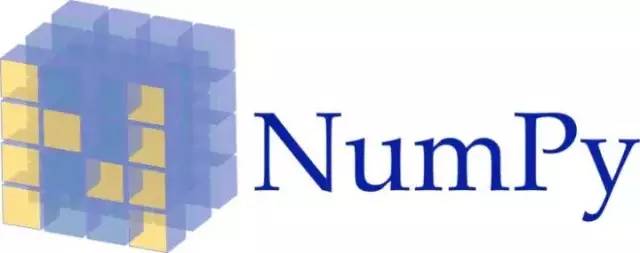Python is one of the most popular and widely used programming languages, and it has replaced many programming languages in the industry. There are many reasons why python is popular among developers. However, the most important point is that it has a large number of libraries for users to use.
The simplicity of python has attracted many developers to use it to develop various libraries, and machine learning is also part of it.
Today we will introduce 10 python libraries that are widely used in the field of machine learning.
The first library to introduce is TensorFlow.
1.TensorFlow
What is TensorFlow?
If you're currently working on a machine learning project with python, you've probably heard of this popular open source library, TensorFlow.
This library was developed by Google in collaboration with the Brain Team, and TensorFlow is used in almost every Google machine learning application.
TensorFlow is like a computational library for writing new algorithms involving a large number of tensor operations. Since neural networks can be easily represented as computational graphs, they can be implemented using TensorFlow as a series of operations on tensors. Also, tensor is an n-dimensional matrix representing the data.
Features of TensorFlow
1. Quick response structure
Using TensorFlow, we can easily visualize every part of the graph, which is not possible when using Numpy or SciKit.
2. Flexible
A very important feature of TensorFlow is that its operations are very flexible. This means it's modular, allowing you to separate out the parts you want to be independent of
3. Easy to train
For distributed computing, it is easy to train on CPU and GPU.
4. Parallel neural network training
TensorFlow provides pipeline streaming, in the sense that you can train multiple neural networks and multiple GPUs, which makes the model very efficient on large systems.
5. Large communities
Needless to say, it was developed by Google and already has a large team of software engineers constantly improving stability.
6. Open Source
One of the best features of this machine learning library is that it is open source and can be used by anyone with an internet connection.
Where is TensorFlow used?
You use TensorFlow every day, and applications you use like Google Voice Search or Google Photos are developed using this library.
All libraries created in TensorFlow are written in C and C++, however, it has a complex front end, implemented in python. Your python code will be compiled and then executed on the TensorFlow distributed execution engine built in C and C++.
In fact, the applications of TensorFlow are limitless, and that's the beauty of it.
2.Scikit-Learn

What is Scikit-Learn?
It is a python library associated with NumPy and SciPy. It is considered one of the best libraries for handling complex data.
Many modifications have been made in this library. One of the modifications is the cross-validation feature, which provides the ability to use multiple metrics. Many training methods, such as logistic regression and nearest neighbor algorithms, show little improvement.
Features of Scikit-Learn
Cross-validation: There are various ways to check the accuracy of supervised models on unseen data.
Unsupervised learning algorithms: Again, there are tons of algorithms in production - from clustering, factor analysis, principal component analysis to unsupervised neural networks
Feature extraction: for extracting features from images and text (such as a piece of text)
Where is Scikit Learn used?
It contains many algorithms that implement standard machine learning and data mining tasks such as dimensionality reduction, classification, regression, clustering, and model selection.
3.Numpy

What is Numpy?
Numpy is considered one of the most popular machine learning libraries in python.
TensorFlow and other libraries internally use Numpy to perform several operations on tensors. The array interface is the best and most important feature of Numpy.
Features of Numpy
Interactivity: Numpy is very easy to understand and use
Mathematical: Makes complex mathematical implementation very simple
Intuitive: Really makes coding easy and grasping concepts easy
Lots of interfaces: widely used, so there are many open source contributors
Where is Numpy used?
This interface can be used to represent images, sounds, and other binary raw streams as n-dimensional arrays of real numbers.
Machine learning library implementation, having knowledge of Numpy is important for full stack developers.
4.Hard
What is Keras?
Keras is considered one of the coolest machine learning libraries in python. It provides a mechanism for easier expression of neural networks. Keras also provides some of the best utilities for compiling models, working with datasets, graph visualization, and more.
On the backend, Keras uses Theano or TensorFlow internally. Some of the most popular neural networks such as CNTK can also be used. When we compare it to other machine learning libraries, Keras is relatively slow because it uses the backend infrastructure to create a computational graph and then leverage it to perform operations. All models in Keras are lightweight.
Features of Keras
It runs smoothly on both CPU and GPU.
Keras supports almost all neural network models - fully connected, convolutional, pooling, recurrent, embedding, etc. Additionally, these models can be combined to build more complex models.
Keras is modular in nature, with incredible expressiveness, flexibility, and the ability to do innovative research.
Keras is a completely python-based framework that makes debugging and exploration easy.
Where is Keras used?
You're already constantly interacting with products built with Keras — Netflix, Uber, Yelp, Instacart, Zocdoc, Square, and many others use it. It is especially popular among startups, which place deep learning at the heart of their products.
Keras includes implementations of many commonly used neural network building blocks, such as layers, objectives, activation functions, optimizers, and a range of tools to make working with image and text data easier.
Also, it provides many pre-processed datasets and pre-trained models such as MNIST, VGG, Inception, SqueezeNet, ResNet, etc.
Keras is also a favorite of deep learning researchers. Keras is especially favored by researchers at large scientific organizations, especially CERN and NASA.
5.PyTorch
What is PyTorch?
PyTorch is the largest machine learning library that allows developers to perform tensor computations at GPU acceleration, create dynamic computation graphs, and automatically compute gradients. In addition to this, PyTorch provides a rich API to solve application problems related to neural networks.
This machine learning library is based on Torch, an open source machine library implemented in C and packaged in Lua.
Launched in 2017, this machine learning library (python) has grown in popularity and attracted more and more machine learning developers since its inception.
Features of PyTorch
End-to-end Hybrid
A new hybrid front-end that provides Eager Mode for ease of use and flexibility, while seamlessly transitioning to graph mode for speed, useful in the C++ runtime environment.
Distributed training
Optimize performance in research and production with native support for asynchronous execution of collective operations and peer-to-peer communication (Python and C++).
python first
PyTorch is not a tool for binding python to a C++ framework. It is built for deep integration into python so that it can be used with popular libraries and packages such as Cython and Numba.
Libraries and Tools
An active community of researchers and developers has built a rich ecosystem of tools and libraries for extending PyTorch and supporting development in areas ranging from computer vision to reinforcement learning.
Where is PyTorch used?
PyTorch is mainly used for applications in fields such as natural language processing.
It was primarily developed by Facebook's artificial intelligence research group, and Uber's probabilistic programming software "Pyro" is built on top of it.
PyTorch is superior to TensorFlow in many ways, and it's been getting a lot of attention lately.
6.LightGBM
[Image uploading...(image-cdefe-1635921502795-3)]
What is LightGBM?
Gradient boosting is one of the best and most popular machine learning (ML) libraries that helps developers build new algorithms using a redefined base model known as decision trees. Therefore, there are specialized libraries that implement this approach quickly and efficiently.
These libraries include LightGBM, XGBoost and CatBoost. There are competing relationships between these libraries, they all help solve common problems and can be used in almost similar ways.
Features of LightGBM
The calculation speed is fast and the production efficiency is high.
Intuitive and easy to use.
Train faster than many other deep learning libraries.
No errors are generated when NaN values and other canonical values are encountered.
Where is LightGBM used?
This library provides a highly scalable, optimized, and fast implementation of gradient boosting, which makes it popular among machine learning developers. Most machine learning full stack developers have won machine learning competitions by using these algorithms.
7.Eli5
[Image uploading...(image-f50b5a-1635921502795-2)]
What is Eli5?
Often, machine learning models predict inaccurate results, and Python's built-in machine learning library, Eli5, helps overcome this challenge. It is a combination of visualizing and debugging all machine learning models and tracking all working steps of the algorithm.
Features of Eli5
Additionally, Eli5 supports other libraries including xgboost, lightning, scikit-learn and sklearn-crfsite. Each of the above libraries can perform different tasks.
Where is Eli5 used?
Mathematical applications that require a lot of computation in a short period of time
Eli5 plays a vital role in the presence of dependencies with other Python packages
Implementing new methods in traditional applications in various fields
8.SciPy

What is SciPy?
SciPy is a machine learning library for application developers and engineers. However, you still need to know the difference between the SciPy library and the SciPy stack. The SciPy library contains modules for optimization, linear algebra, integration, and statistics.
Features of SciPy
The main feature of the SciPy library is that it was developed using Numpy, and its arrays take full advantage of Numpy.
In addition, SciPy provides all available numerical routines such as optimization, numerical integration, and many others using its specific submodules.
All functions in all SciPy submodules have specific documentation comments.
Where is SciPy used?
SciPy is a library for solving mathematical functions using Numpy. SciPy uses Numpy arrays as the basic data structure and comes with modules for a variety of common tasks in scientific programming.
SciPy can easily handle tasks such as linear algebra, integration (calculus), ordinary differential equation solving, and signal processing.
9.Theano
What is Theano?
Theano is a computational framework machine learning library for computing multidimensional arrays. It works similarly to TensorFlow, but is not as efficient as TensorFlow because it is not suitable for production environments.
Additionally, Theano can also be used in a distributed or parallel environment similar to TensorFlow.
Features of Theano
Tight integration with Numpy: ability to use full Numpy arrays in uncompiled functions
Efficient use of GPUs: perform data-intensive computations much faster than CPUs
Efficient symbolic distinction: Theano takes derivatives for functions with one or more inputs
Speed and stability optimization: find the correct answer to log(1+x) even when x is very small. This is just one example that can demonstrate the stability of Theano
Dynamic C code generation: Evaluate expressions faster than before, resulting in greatly improved efficiency
Extensive unit testing and self-validation: detecting and diagnosing many types of ambiguities and errors in models
Where is Theano used?
The actual syntax of Theano expressions is symbolic, which is inconvenient for beginners accustomed to regular software development. Specifically, expressions are defined in an abstract way, compiled, and then used directly for computation.
It is specifically designed to handle the computations required by the large neural network algorithms used by deep learning. It is the oldest library of its kind (development started in 2007) and is considered the industry standard for deep learning research and development.
Theano is currently being used in several neural network projects, and the popularity of Theano is increasing over time.
10.Pandas

What is Pandas?
Pandas is a machine learning library in Python that provides advanced data structures and a wide variety of analytical tools. An important feature of this library is the ability to transform complex data operations using one or two commands. Pandas has many built-in functions for grouping, data combining, filtering, and time series functionality.
Features of Pandas
Pandas makes the whole process of data processing easier. Support for operations such as re-indexing, iteration, sorting, aggregation, joins, and visualization is one of Pandas' special features.
Where is Pandas used?
Currently, there are fewer versions of the Pandas library, which includes hundreds of new features, bug fixes, enhancements, and API changes. Improvements in Pandas lie in its ability to group and sort data, choose the most appropriate output for the method used, and provide support for performing custom types of operations.
When using Pandas, data analysis plays a big part. However, Pandas ensures high performance and good flexibility when used with other libraries and tools.
Summarize
Recommended articles in the past:
Can you really learn Python by yourself? If
you want to easily get started with Python programming, you must read these 10 classic cases, and you can find a job after
learning Python learning: quickly build a python environment